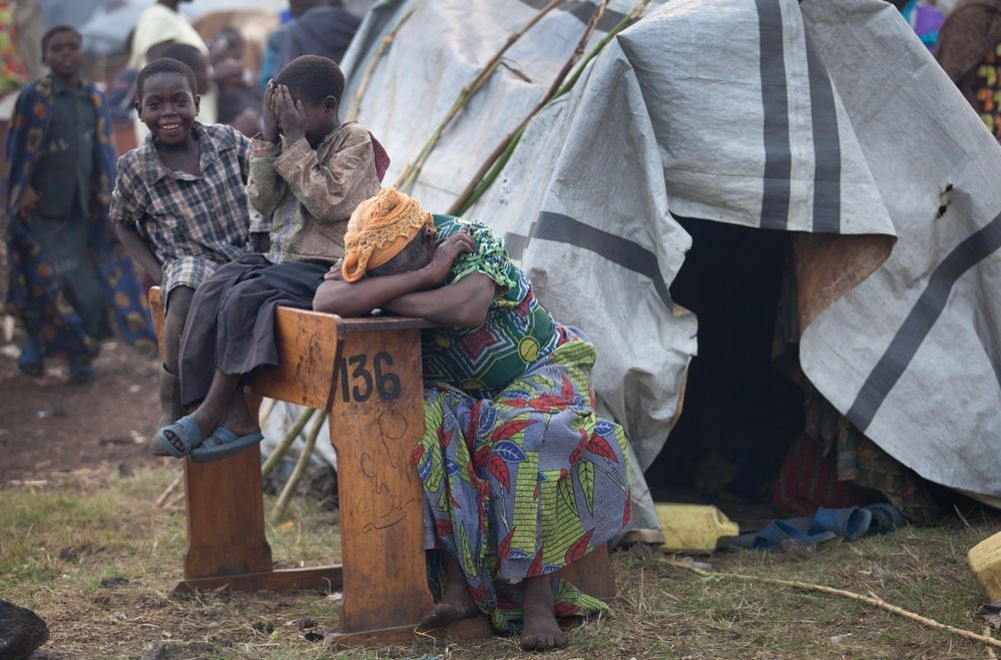
The headlines paint a stark picture of the current state of global migration. Migrants are dying at sea in record numbers, more than 100,000 people have already fled violence in Sudan with more than 300,000 additional people displaced within the country, and rising sea levels risk pushing 900 million people living in coastal areas from their homes. As poverty, climate change, violent conflict and other crises arise, people already living in vulnerable circumstances face stark choices. If they cannot find safety, food, or opportunity at home, many will look for it elsewhere. It is human to seek survival.
Just as the story of human history has been a story of migration, so too will our future. Yet, the current global multilateral system for migrants does not meet the needs of most people on the move. International asylum protections, created alongside the UN system more than 70 years ago, remain critical but are insufficient to support the majority of vulnerable people displaced across the globe today. Many people on the move will not meet the UN definition of a refugee but having no other options, they appeal to the already overburdened global refugee system for support. As a result, pressures on asylum and refugee systems across the world are becoming unsustainable, threatening to sink once popular support for protecting people seeking safety.
If nations’ only response to migration is to offer refugee protections or return to the country people have left, we will fail to meet the basic human needs of millions of vulnerable people around the world. We need a new approach, a new vision, and new multilateral solutions so that as a global community, we can proactively address the challenges of migration and harness its benefits.
The International Organization for Migration (IOM) is the UN agency charged with promoting humane and orderly migration. IOM works in every corner of the world, providing protection, safety, and resources to the more than 100 million displaced people on the move and the millions more people who live in precarious situations that could lead them to become displaced. But if IOM is to drive a new multilateral approach – truly implementing the vision captured in the Global Compact for Safe, Orderly and Regular Migration that the global community adopted in 2018 – it must improve the way that it engages with its member states, other stakeholders, and migrants themselves to address the root causes of migration and to build comprehensive, strategic approaches to migration pressures.
To achieve better multilateral solutions, there are three things IOM must do immediately.
First, IOM must put people at the center of its work. IOM must build migration solutions with those most impacted by migration. It can start by hiring a truly diverse workforce that represents the diversity of the agency’s members and by ensuring that the organization’s leadership builds sustained partnerships with all our member states – not just those that donate the most. In my current position at IOM managing reform, I have spoken with people from all corners of the world: fleeing mothers with their children on their backs; families devastated by frequent climate crises; and young people who have grown up in refugee camps. They are asking IOM not just to listen to them and learn from their experience, but to ensure there are meaningful ways for migrants to participate in building solutions for affected population.
Second, IOM must revise the playbook so that it better anticipates and mitigates displacement factors before millions of people are on the road. IOM is one of the most effective humanitarian response agencies in the world, but for too long, its response has been primarily to react. With the amount of data IOM and other agencies collect, it is well positioned to engage more proactively – at a fraction of the cost and with better protections of human life. With drought, for example, IOM can already begin to anticipate which communities will be most affected and start to engage with them, their governments and their neighbors early. In some cases, it can improve community resilience, allowing people to stay. In other cases, IOM should build pathways to safe migration in cooperation with the places they are most likely to go. That is not to say IOM can anticipate every crisis, but when the organization responds to disaster, it must ensure that interventions build resilience, rather than exacerbate the situation.
Finally, IOM must partner with other non-state actors who have an interest in promoting well-managed migration. Whether it’s diaspora communities, civil society, or the private sector, sustainable solutions will not be achieved by governments alone. IOM must identify and build partnerships both within and outside the UN system to ensure the mobility of talent and drive innovation in an ethical and people-centric way. This is a model that IOM is already using in its disaster response, and one that can be applied to early intervention and in new ways to create safe, sustainable pathways to migration.
IOM has a choice: continue to respond with the status quo and a multilateralism of the 1950s or seize the moment to respond in a more strategic, data-driven, multi-stakeholder way. By changing the way countries and governments cooperate and respond to migration, we will not only use our resources more effectively, but we will also save more lives. More importantly, together we will unlock the enormous potential for progress, innovation, and development that migration offers.
About the Author:
Amy Pope is the United States’ candidate to become the next director general of the International Organization for Migration. She currently serves as the Deputy Director General for Management & Reform. She previously served as a senior official in the President Biden and President Obama White House. Amy tweets at @AmyEPope.
The views and opinions expressed in this think-piece are those of the authors and do not necessarily reflect the official policy or position of SIPA or Columbia University.
